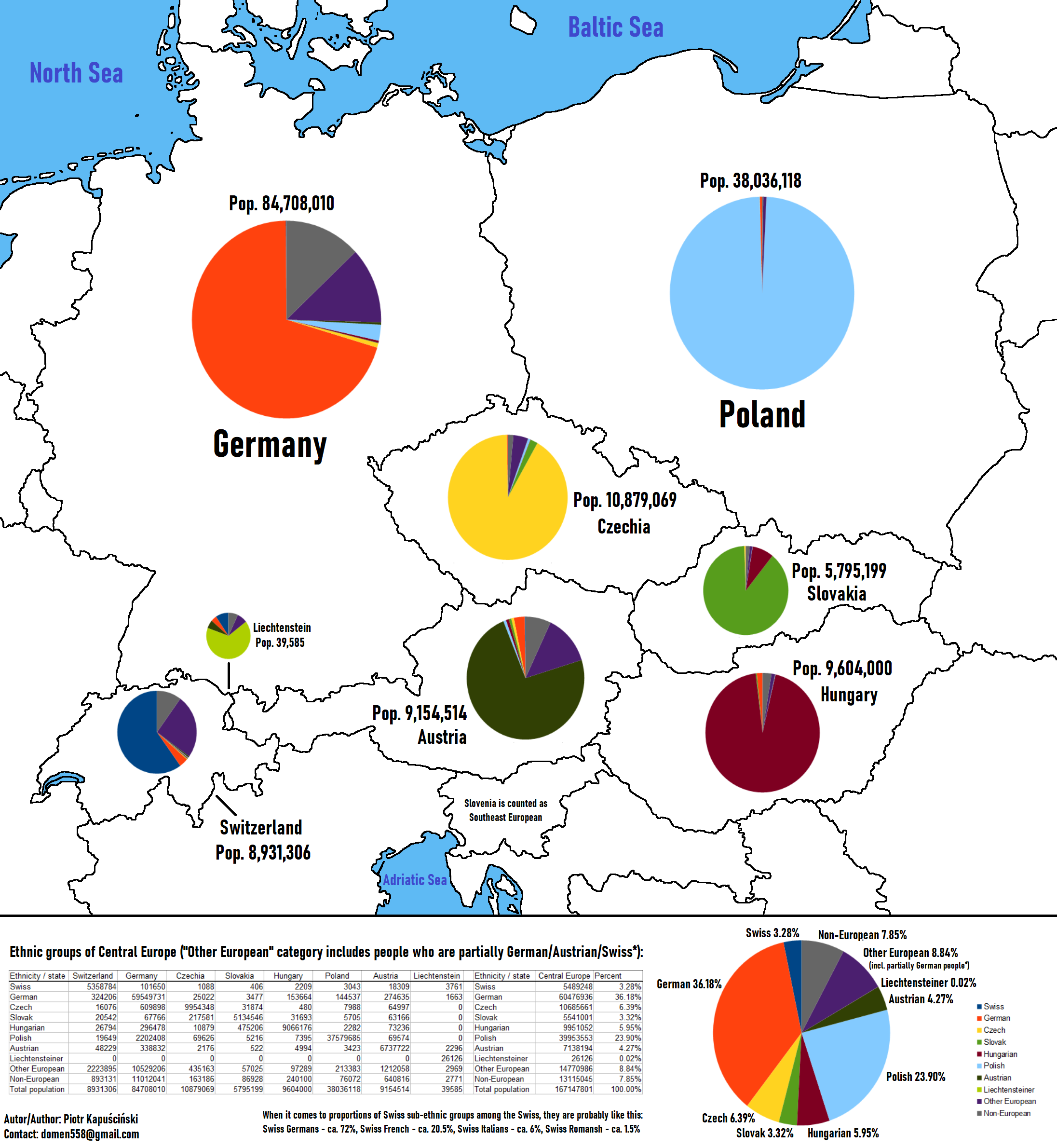Ethnic Groups of Central Europe Map


David Chen
Data Visualization Specialist
David Chen is an expert in transforming complex geographic datasets into compelling visual narratives. He combines his background in computer science ...
Geographic Analysis
What This Map Shows
This map provides a detailed visualization of the ethnic groups residing in Central Europe, highlighting the diverse cultural landscape of this dynamic region. Central Europe, often characterized by its historical complexities and shifting borders, is home to a variety of ethnic communities, each contributing to the rich tapestry of languages, traditions, and identities. The data displayed is derived from the most recent national censuses and demographic studies, offering a snapshot of the current ethnic composition across countries such as Poland, Czech Republic, Hungary, Austria, and Slovakia.
Deep Dive into Ethnic Diversity in Central Europe
Central Europe is a melting pot of ethnicities, shaped by centuries of migration, wars, and political changes. The predominant ethnic groups in this region include Poles, Czechs, Hungarians, Slovaks, and Germans, but it is essential to recognize the presence of numerous minority communities that add to the region's cultural richness.
In Poland, for instance, the majority ethnic group is Polish, comprising over 97% of the population. However, significant minorities such as Silesians, Kashubians, and Ukrainians exist, each with its unique cultural identity and traditions. Interestingly, the Silesians, while often considered Polish, have a distinct regional identity, and discussions about their recognition as a separate ethnic group continue to this day.
Moving to the Czech Republic, Czechs make up about 94% of the population. Slovakia, a country that once formed part of Czechoslovakia, shows a similar demographic, with Slovaks representing around 80% of the population. However, the Hungarian minority, primarily found in southern Slovakia, plays a crucial role in the cultural dynamics of the region, advocating for their language and cultural rights.
Hungary is predominantly ethnic Hungarian, with about 85% of the population identifying as such. The country also hosts a significant Romani population, whose culture and traditions have been integral to Hungary's national identity, albeit often facing social challenges.
One of the most fascinating aspects of Central Europe's ethnic landscape is the impact of historical events. For example, the aftermath of World War I and the subsequent Treaty of Trianon significantly altered the ethnic map of Hungary, leading to the displacement of many ethnic Hungarians into neighboring countries. This has created a complex situation regarding national identity and ethnic rights in the region.
Regional Analysis
When analyzing the map of ethnic groups in Central Europe, we can see distinct regional patterns. For instance, the northern parts of Poland and the Czech Republic show a homogenous ethnic composition, while areas in the south, particularly in Slovakia and Hungary, showcase a mix of ethnicities.
In Hungary, the presence of various ethnic groups, including the Romani, Slovaks, and Croats, can be seen prominently in specific regions, such as Baranya County, which is known for its diverse cultural heritage. In contrast, regions like the northern Czech Republic remain predominantly Czech, with limited ethnic diversity. This stark difference highlights how historical migrations and border changes have shaped the demographic landscape.
Interestingly, the border areas often have unique ethnic compositions, such as the regions around the Tatra Mountains, where Polish and Slovak cultures intertwine. This cross-cultural interaction is further evidenced by shared festivals and traditions, creating a blend that enriches the local community.
Significance and Impact
Understanding the ethnic composition of Central Europe is crucial for several reasons. First, it sheds light on the historical and cultural complexities that have influenced national identities and social dynamics in the region. Today, issues of ethnic rights, representation, and integration remain at the forefront of political discussions, particularly in countries with significant minority populations.
Moreover, as globalization continues to influence migration patterns, we may see shifts in these demographics. For instance, an increase in immigration from outside Europe is likely to introduce new ethnic groups into the landscape, which could dramatically alter the current ethnic map. This ongoing evolution raises questions about national identity and the potential for cultural integration.
In conclusion, the ethnic groups of Central Europe are not merely statistics; they represent living cultures, histories, and communities that have shaped the region into what it is today. As we look ahead, it will be fascinating to observe how these diverse groups continue to interact and evolve within an ever-changing political and social environment. What are your thoughts on the future of ethnic diversity in Central Europe?
Visualization Details
- Published
- September 15, 2025
- Views
- 80
Comments
Loading comments...